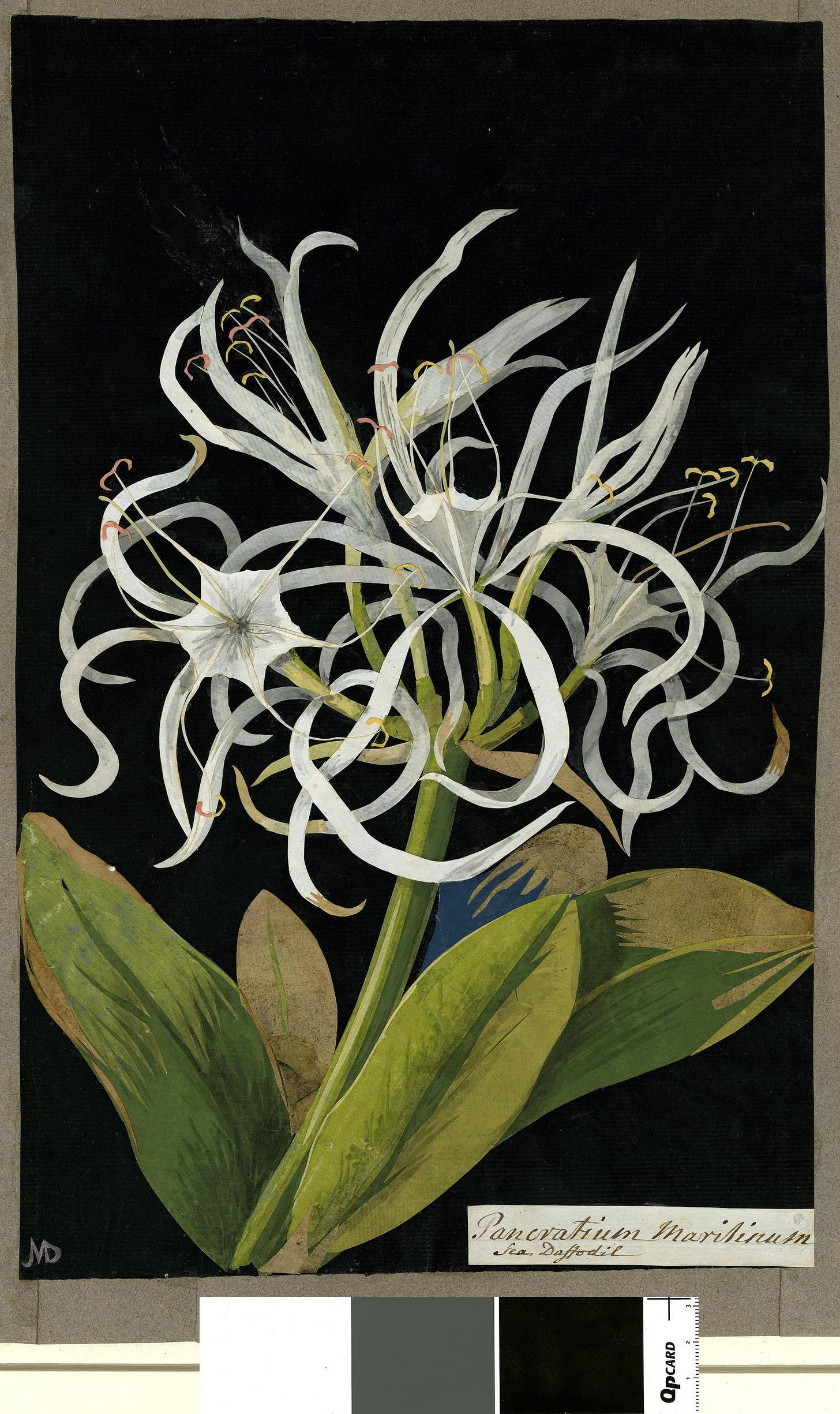It’s been a busy summer so far. Still, I finally finished reading The Story of Art Without Men by Katy Hessel - and wow - it is packed with all kinds of artists to celebrate, who inspire, push boundaries, and deserve the thoughtful recognition found within these pages. I also love Hessel’s storytelling voice that weaves through the various periods of art history while providing insightful context and a unique perspective. If you’ve ever wondered where are the women artists of history - here they are!
A Selection of Artists and Art from The Story of Art Without Men
Following are a few of my favorite new-to-me artists from the book. I enjoyed many more, but wanted to give you a small list to preview and hopefully inspire a longer look at how art history has been traditionally framed as well as some (possibly) new artists and art to explore.
Artists
Mary Delany (1700-1788): BritishMuseum.org
Delany created a remarkable 985 detailed floral collages over 10 years which mimic the look of ornate botanical paintings. And, she didn’t start until the age of seventy-two. The collages are beautiful and masterful (some of which can be seen at the link above), making a lovely addition to the book.
Anna Atkins (1799-1871): Natural History Museum (UK)
Atkins pioneered the use of cyanotypes and was the first person to illustrate a book with photographic images. The botanical images she created are inviting with their delicate monochromatic subject matter giving them a rather modern sensibility.
Hannah Höch (1889-1978)
A pioneer of photomontage, Höch adeptly used her art to critique popular culture and the roles of women. She noted: “Most of our male colleagues continued for a long while to look upon us as charming and gifted amateurs, denying us implicitly any real professional status.” (MoMA.org)
Charlotte Salomon (1917-1943): Jewish Women’s Archive
A German Jewish artist, Salomon created a remarkable 784 individual gouaches for Life? Or Theatre while on the run from the Nazis between 1941 and 1943. Her graphic style provided “rich, vivid imagery” for the telling of a fictionalized story of her and her family’s life. Tragically, she was killed in Auschwitz, but her work was found after the war and donated to the Jewish Historical Museum in Amsterdam.
Janet Sobel (1893-1968): MoMA.org
Now recognized as a pioneer of the Abstract Expressionist movement, Sobel was a self-taught artist who created ephemeral linear and color field abstractions reminiscent of both vast galaxies and inner turmoil. Inspired by music and emotions, their rhythms are evident in the movement of paint across the surface.
Art
These pieces specifically spoke to me for a variety of reasons. I hope you find them interesting as well.
Gluck, Medallion (YouWe), 1936 (author.io)
Eva Hesse, Right After, 1969 (WomennArt.com)
Sheila Hicks, Escalade Beyond Chromatic Lands, 2016-2017 (artforum.com)
Judith Scott, Untitled, 2004 (arthistoryproject.com)
Julie Mehretu, Stadia II, 2004 (whitney.org)
Where are we now?
Current art exhibitions and news leave me optimistic about under-represented communities having a voice in the arts and securing a place in art history. (A few of which are noted below from my recent perusals online.)
It’s Pablo-Matic: Picasso According to Hannah Gadsby now showing at the Brooklyn Museum brings humor into a conversation about whether or not we can or should separate the art from the artist.
Monet/Mitchell: Painting the French Landscape - a beautiful traveling show I recently saw at the Saint Louis Art Museum featuring paintings by Joan Mitchell in conversation with those of Henri Matisse.
Jeffrey Gibson was recently selected as the U.S. representative and first Indigenous artist for a solo show at the Venice Biennale, as reported by NPR.
News outlets are reporting on an ever-growing list of women-centered art shows, as noted in “Women Artists Dominate 2023 Exhibition Schedule” from Artlyst and “The future is female: US exhibitions bring women to the forefront in 2023” from The Guardian.
I was also honored to participate in the “Hidden Gallery of Women’s Art” presented alongside the beautifully moving documentary film “Hidden Letters”. And I’m seeing a growing list of opportunities for women and under-represented artists to submit and show their work both locally and nationally.
There is always more work to be done, but I believe we are getting closer to a more complete view of art, its history, and its future, by intentionally including perspectives that have previously been excluded from the conversation. And now, having this book as a guide to art history from the perspective of artists with whom I feel a greater connection than the artists who were fed to me from the lecture halls of art school is nothing short of extraordinary. I look forward to all they inspire.
~ Jennifer
As summer continues to be a bit of a scheduling jumble for me, I will most likely continue to be less regular and consistent with my “Artist’s Notes” here. I appreciate your willingness to read what and when I am able, and I look forward to getting back to a more regular schedule in the Fall.





Just got the Bloomberg Ap and have even more reason to check it out.
Thanks always for insights shared!